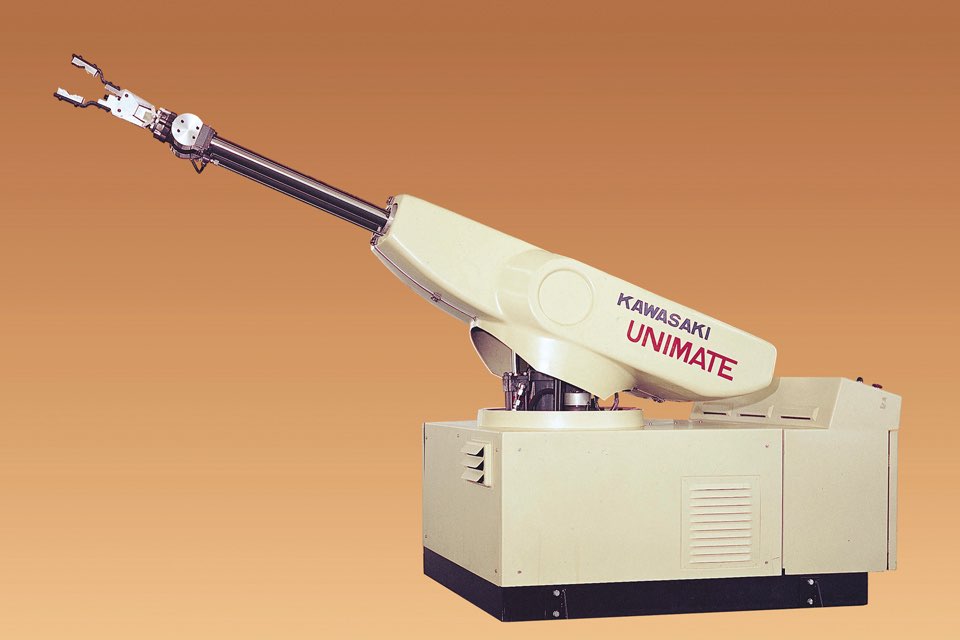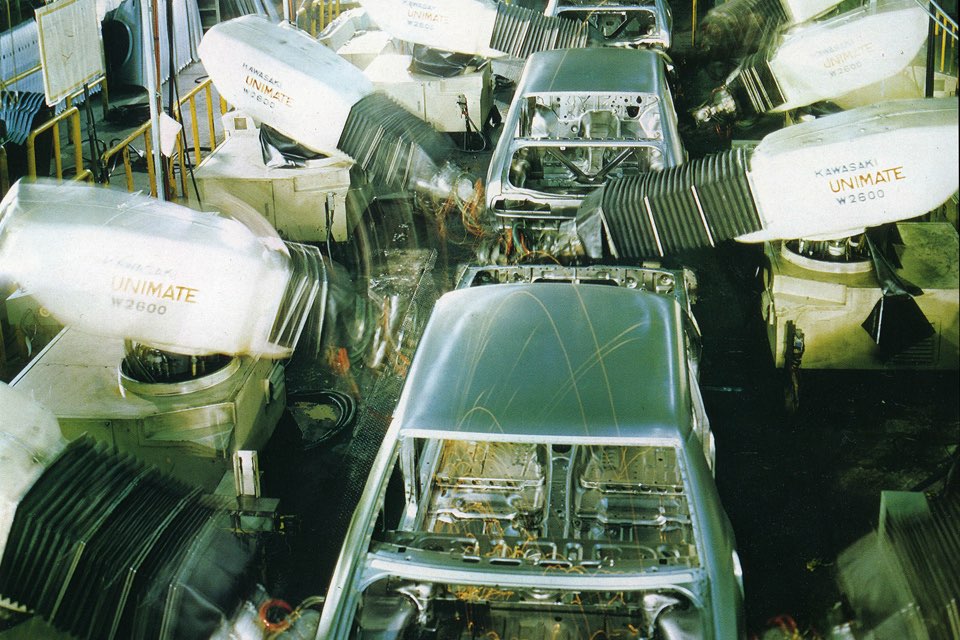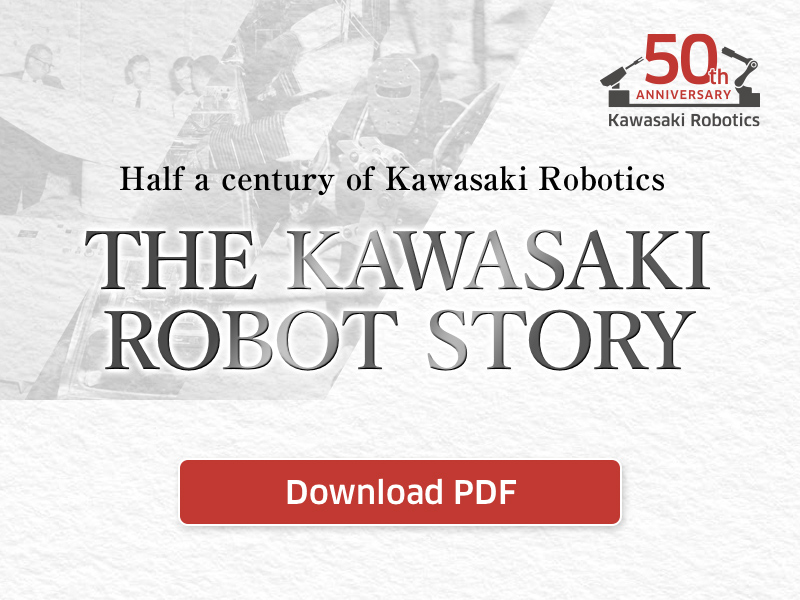A Project to Make Japan's First Domestically
Manufactured Industrial Robot Begins
Japan entered a period of rapid economic growth beginning in 1954.
Although Japan managed to achieve a yearly economic growth of more than 10% and would become the country with the second largest GNP in the world in 1968,
there were serious labor shortages facing mainly its manufacturing sector, which accounted for 30% of that GNP.
Automation and streamlining processes in automobile manufacturing sites where production capacity was increased
in order to catch up with the effects of rapid motorization, had become urgent.
Debut of the First Domestically Manufactured Industrial Robot
Following the establishment of the “Office for Promoting Domestic Production of Industrial Robot (IR)” in June 1968 and the execution of the technical license agreement with Unimation in October, Japan’s first domestically manufactured industrial robot, the first “Kawasaki-Unimate 2000” was completed in 1969. Up until then, Japanese manufacturers had already automated their production lines with dedicated machines designed and produced for specific purposes. But the Kawasaki-Unimate 2000 drew interest from industries facing serious labor shortages for its ability to adapt to various operations.

Riding the Motorization Trend,
Industrial Robots are Installed on Automobile Production Lines
It was the car manufacturers who expressed a strong interest in the release of the Kawasaki-Unimate. Japanese car manufacturers, which increased their production capacity in order to catch up full-scale motorization during the period of rapid economic growth, were struggling with securing workers for welding, one of Japan’s "3K" (kitsui, or "hard"; kitanai, or "dirty"; and kiken, or "dangerous") jobs. Despite such circumstances, the Kawasaki-Unimate could take over the work of ten experienced welders and work day and night shifts, saving labor of 20 people combined. As Japanese car manufacturers discovered these benefits, they took the initiative and began implementing the Kawasaki-Unimate in their factories one step ahead of other industries.
During the first oil crisis in 1973, the economic slump caused manufacturers to pull back investing on facilities, putting a pause to the stationing of robots for the time being. However, when the second oil crisis occurred in 1979, streamlining and automation in industries in Japan had already been progressing, actually further encouraging the implementation of robots. Then in 1980, the Japanese industrial robot industry entered into a new era of widespread adoption. The Kawasaki-Unimate saw its fair share of action, operating in welding, handling and painting, and by May 1980, Kawasaki shipped out a total of 1,000 units of its Unimate. Although it took nine years to sell first 500 units, only two were needed for the sales of the next 500 units. The business grew rapidly.



